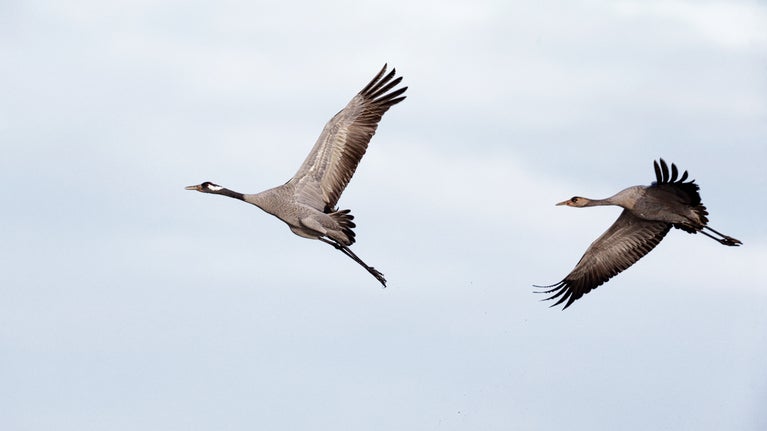It’s a bird! It’s a crane!: Chick of Britain’s tallest bird fledges at Wicken Fen for the first time
- Published:
- 04 September 2024

A pair of cranes at the Wicken Fen National Nature Reserve in Cambridgeshire, cared for by the National Trust, has successfully fledged a chick for the first time since choosing to breed at the site in 2019.
Standing at 4ft (1.2 metres) in height, the common crane is Britian’s tallest bird, but its numbers have plummeted across Europe due to disturbance, shooting and drainage of the wetlands it relies on and as a result it is now classified in the UK as Amber under the Birds of Conservation Concern 5[2].
Though once native to East Anglia’s fenlands, the breeding pair, which came to breed at Wicken Fen in 2019, is suspected to be the first in the area in 400 to 500 years[3].
The same pair has since returned to breed each year for the last six years. However, although their eggs usually hatched, this year is the first time a chick has been successfully reared by the pair.
Alan Kell, Countryside Manager for the National Trust at Wicken Fen said: “We class chicks as fledged as soon as they are able to fly, which for cranes is not usually until they reach ten or eleven weeks old.
“We are delighted by this news and it is a testament to the work the team have been doing for several years in creating the right kind of habitats for birds such as these to feel at home and be able to breed successfully.
“With a growing network of similar projects across the region, we are hopeful that these successes mean East Anglia will soon be able to support a growing population of these elegant birds year-round.”
The juvenile was discovered by crane expert Norman Sills[4], who knows all the fenland breeding crane pairs by sight, due to subtle difference in their appearance, such as how dark or light their bustles[5] are.
Wildlife expert Ajay Tegala, who works at Wicken Fen, has been following the progress of the crane family with interest: “For the last few years, the Wicken Fen team have been rooting for the cranes to successfully rear a youngster. When Norman spotted the Wicken Fen pair with a juvenile 12 miles away at Wildfowl and Wetlands Trust’s site at Welney, we finally knew for sure they’d done it.”
Notoriously illusive during their breeding season, cranes nest in remote, wet areas, protected from predators and well away from public paths.
Lizzie Bruce, Site Manager at WWT Welney adds: “It is vital that conservation organisations work together to both look after our precious wetlands and create more spaces for rare wildlife.”
“We recently had 22 cranes, including eight juveniles, making use of our restored wetland on Lady Fen. Seeing cranes at Welney, and the Ouse Washes, which have fledged from Wicken Fen and other sites in the area, shows how important it is that a network of suitable habitats is available for them.”
The UK crane population has been steadily increasing[6] and it is another feather in Wicken Fen’s cap to be contributing to this conservation success story.